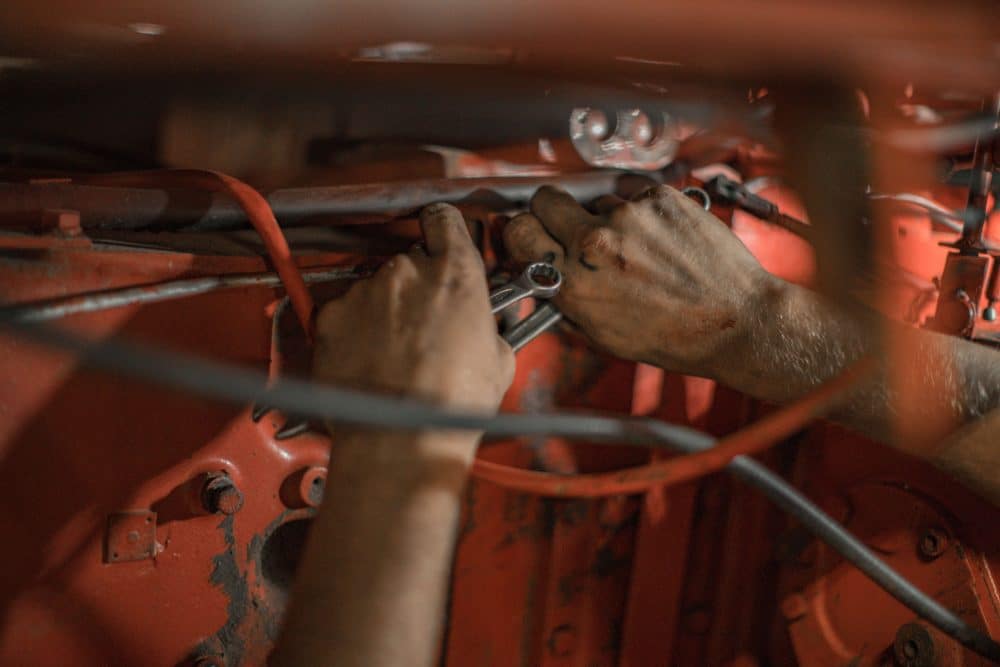
How To Get Into Real Estate Photography
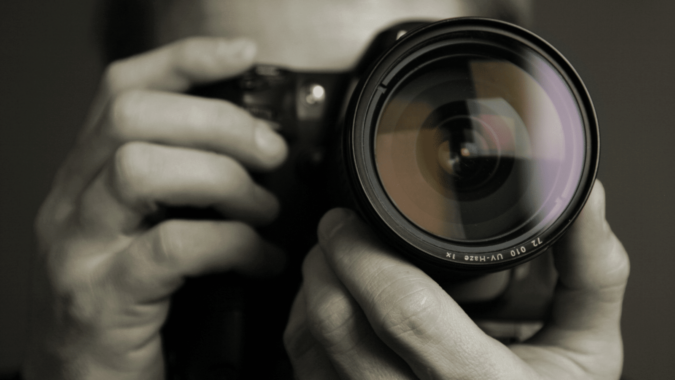
Are you looking for a way to make money in the real estate industry? Have you ever thought about entering the world of real estate photography? If so, then this post is just what you need. Real estate photography is an ever-growing business and learning how to break into it can be difficult.
In this post, we’ll cover everything you need to know about getting started as a real estate photographer, including the equipment needed, marketing strategies, and tips on finding success. So whether you’re a budding entrepreneur hoping to join the ranks or an established photographer considering adding another income stream. Dive in and learn how to get into real estate photography!
Understanding Real Estate Photography
Real estate photography is an essential part of marketing for real estate agents. It allows potential buyers to take a virtual tour of the property and get a sense of what it looks like before visiting in person. But, how do you make sure your photos are captivating? Let’s break down the basics of real estate photography so you can make your properties stand out from the rest.
The Basics of Real Estate Photography
First and foremost, real estate photography seeks to capture all a property’s best features to attract potential buyers. This means that all angles should be considered, including any unique features or details that will help give prospective buyers a better sense of what life would be like living in that home. In addition, the right angle can also draw attention away from any less desirable aspects of the property.
To ensure that your photos are as captivating as possible, it is essential to use professional equipment such as wide-angle lenses, tripods, and flashes. These tools will help you capture high-quality images with accurate colors and sharp details.
Another key element is lighting – natural light is best, but if it needs to be supplemented, artificial light can be used strategically to create a strong contrast between light and dark areas, highlighting certain elements and de-emphasizing others as needed.
Finally, post-processing techniques such as cropping and retouching can further enhance your photos by making them look more professional and aesthetically pleasing.
Selling Your Property With Professional Photos
By taking advantage of all that real estate photography offers, you can present your properties in their best light and increase interest from potential buyers. Professional photographs show off all the great features of a property while minimizing any less desirable attributes.
This helps create an attractive image that encourages people to want to learn more about the home or even book a viewing! Furthermore, having high-quality images associated with your listings can also boost trustworthiness among prospective buyers, showing them that you take pride in honestly presenting quality homes.
The Role of a Real Estate Photographer
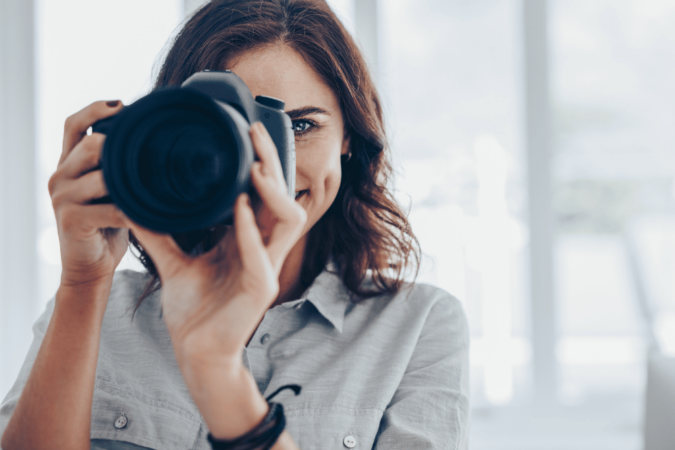
Real estate photography is an essential part of the real estate industry today. Professional real estate photographers are responsible for capturing visually appealing images that accurately depict the properties listed for sale or rent. A good real estate photographer will be knowledgeable about the current trends in photography and have experience creating images that accurately reflect the property’s condition and appeal.
What Does a Real Estate Photographer Do?
Real estate photographers take photos of properties for marketing purposes, such as listing on websites or social media. This means they need to capture images that accurately represent the property inside and out. Good real estate photography should showcase all aspects of the property, from its exterior to interior features like fireplaces or built-in appliances. It should also highlight any unique features of the home, such as landscaping, views, or any upgrades made to the home.
In addition to taking photos, a real estate photographer will be responsible for editing and processing them. So they look their best when presented to potential buyers or renters. This includes color correction, blemish removal, and other adjustments to ensure each photo looks its best before being used in a listing or advertisement. As such, real estate photographers must stay up-to-date on advancements in photo editing software and techniques to stand out from other photographers in their field.
Real estate photographers must also be able to communicate effectively with clients to ensure that they understand what type of photos need to be taken and how they should be edited. They must be able to translate client needs into visual storytelling elements so that potential buyers can get an idea of what it would be like living in a particular property before ever setting foot inside it.
How To Become A Real Estate Photographer: A Step-by-Step Guide
Are you looking to break into the real estate photography world? Do you have a knack for capturing beautiful photos but aren’t sure how to make it your full-time career? This step-by-step guide will provide all the information necessary to become a successful real estate photographer.
From marketing yourself and building an impressive portfolio to honing in on your creative vision and learning specialized techniques explicitly designed for this field – by following these guidelines, you can soon be making a living from your love of photography. Learn how to turn your passion into profit, and read on!
1. Get a Camera and Photography Training
The first step to becoming a real estate photographer is to acquire a digital or film camera. It’s important to get the best quality camera you can afford, as it will make all the difference in the quality of final images. Not only that, but you should also take some basic photography classes or even sign up for a professional photography course. These will teach you the basics of composition, lighting, and other essential tips about shooting real estate photos.
2. Learn About Real Estate Photography
Real estate photography differs from regular photography because it requires knowledge beyond just taking pictures. You need to understand the technical aspects of shooting real estate photos and the marketing side. You should familiarize yourself with different types of lighting and angles, use photo editing software to enhance your images, and learn how to market your services to potential clients.
3. Develop Your Portfolio
Having a good portfolio is key when it comes to real estate photography. Clients will want to see your best work, so make sure you have a selection of photos that showcase your skills and creativity. First, try shooting some friends or family members’ homes and upload the results to social media or create a website to get more exposure.
5. Network
The real estate industry is filled with people who are always on the lookout for new talent. Therefore, networking and making yourself known within the industry are important. Join local real estate photography groups, attend events, and post your work online or in magazines. This will help you get noticed by potential clients and build up a solid base of clients.
6. Set Your Rates
Once you have established yourself as a real estate photographer, it’s time to set your rates. While there is no shortage of photography jobs in the industry, you should still ensure you are charging fair prices for your services. This will help ensure you can make a living as a real estate photographer, while still providing quality results for your clients.
7. Market Yourself
Marketing is key to success in any industry, and real estate photography is no exception. Start by creating a website or social media page to showcase your work and ensure you actively engage with potential clients online. You can also write blog posts to demonstrate your expertise in the field or join local networking events. These strategies will help you build up your client base and ensure a steady stream of work.
These steps should give you a good foundation for becoming a real estate photographer. Remember to stay up-to-date on industry trends, practice your photography skills regularly, and don’t be afraid to reach out to potential clients. You can become an in-demand real estate photographer with hard work and dedication.
The Benefits Of Getting Into A Real Estate Photography Business
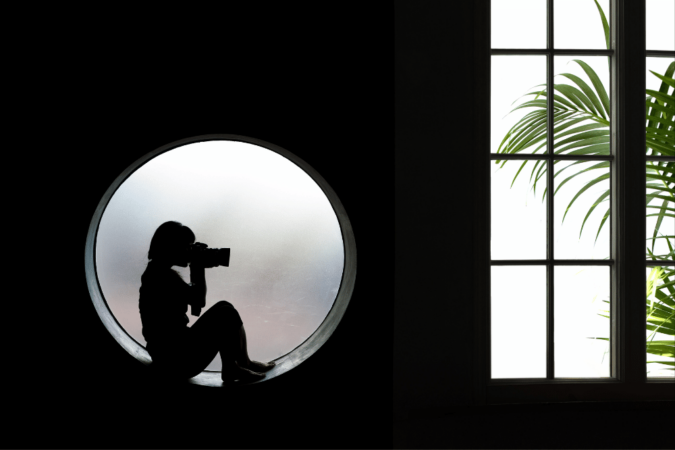
Real estate photography has become an increasingly popular way for home buyers and renters to get a good understanding of the home they are interested in. It allows potential customers to check out details like available space, measurements, and overall layout before deciding whether or not they want to proceed with making the purchase.
If you’re looking for an excellent opportunity to make money while doing something you love, getting into real estate photography might be just what you need. Below we’ll explore all the incredible benefits of becoming a real estate photographer! Keep reading on if you’re curious about what these advantages are!
1. Financial Freedom:
A real estate photography business is a great way to achieve financial freedom, providing a steady income stream. You can set your rates and work on projects that interest you most.
2. Flexible Schedule:
Being a real estate photographer allows you to create your working schedule. You can choose when and how often to work, giving you more time for other endeavors or passions.
3. Increased Exposure:
Working as a real estate photographer lets you network with new people and showcase your work on various platforms. This will help you gain recognition as well as future clients.
4. Variety:
Every real estate property is unique and offers you the chance to showcase your creativity. With each project, you can try new techniques and find different ways to capture space.
5. Growth Potential:
As a real estate photographer, there is plenty of room for growth as you improve and gain more experience in the field. You can take on bigger projects and more challenging tasks, resulting in better pay and greater recognition of your work.
6. Professional Network:
Working as a real estate photographer also allows you to join a professional network of other photographers and learn from their experience. This can help you hone your skills and bring new ideas to your projects.
7. Satisfaction:
As a real estate photographer, you will capture stunning images of unique and beautiful properties that potential buyers can view. Seeing your work displayed and appreciated is a great motivator and source of satisfaction.
8. Career Stability:
Working as a real estate photographer is a great way to have a stable career with the potential for growth in the future. You can become an established professional in your field with the right skills and dedication.
9. Benefits of Technology:
A real estate photography career allows you to take advantage of the latest technology. You can use drones, virtual reality, and other tools to get even better project results.
10. Opportunity for Travel:
Working as a real estate photographer allows you to travel while doing something you love. You can explore new places and capture their beauty with your camera.
Real estate photography is a great way to make money, practice your creative skills, and get the recognition you deserve for your work. With the potential for financial stability, growth, and increased exposure, joining this business could be very rewarding. If you have a passion for photography, real estate photography could be your perfect job.
What Equipment Do You Need To Get Started In A Real Estate Photography Business?
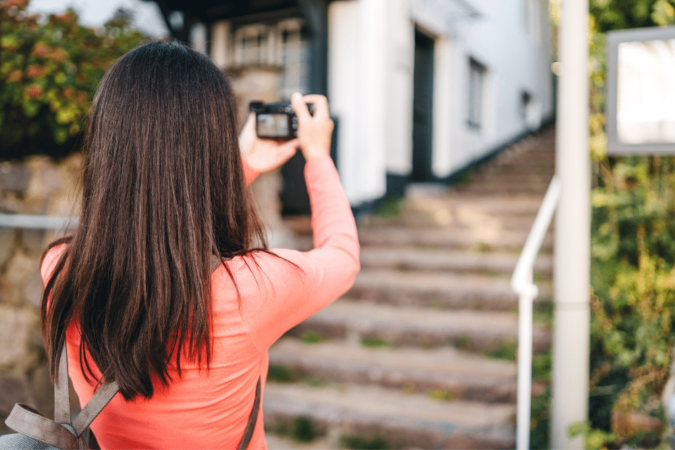
Real estate photography is an advantageous and lucrative business, but it requires the right equipment to get started. Here’s a list of what you need to get started in real estate photography:
1. Digital Camera
Real estate agents entrust real estate photographers to capture the best possible images of the home they are trying to sell. Becoming a real estate photographer requires essential equipment, beginning with a digital camera. Due to its high resolution, the camera should have a lens that can capture sharp vertical lines and even details inside the real estate property. Investing in additional lenses can help address wide shots, enable macro photography for tiny objects and allow close-range aerial shots to make real estate images attractive.
You may also be required to provide images of real estate properties at night, thus, a flash unit is also necessary. Having all these necessary tools can be vital in getting started in the real estate photography business.
2. Tripod
Regarding real estate photography, a tripod is an essential tool for real estate agents. A tripod helps keep the real estate photography images steady and stable, resulting in more professional-looking shots.
Additionally, when a real estate agent is shooting interiors, tripods will help ensure all angles are covered and consistent results are achieved. Investing in a good quality tripod is a must for real estate agents as it is an imperative piece of equipment to produce stunning real estate photographs.
3. Lenses
When it comes to real estate photography, the type of lenses you choose can make a big difference in the end result. A wide-angle zoom lens or ultra wide-angle lens will capture an entire room in one shot, while a tilt-shift lens can help ensure the horizontal lines are straight and clear.
You don’t want lens distortion when taking real estate pictures, so make sure you’re investing in high-quality glass for minimal distortion on your images. Real estate pictures will turn out even better with the right lenses!
4. Drone
Drone technology has become a real estate photography necessity, making capturing aerial shots of properties easier. Operating a real estate photography business without a drone cuts off the potential for wide-reaching photos that help buyers and sellers get the full gist of real estate.
You will need to look into getting a drone with good dynamic range capabilities; many mid-range drones can provide well-exposed Real Estate shots with minimal effort!
A basic camera equipment setup should also be purchased to shoot accurate real estate images from the ground.
5. Lighting
Getting all the necessary lighting for your real estate photography business is essential for capturing the beautiful details in a listing. Depending on the size and type of building you are photographing, you will need ambient light, natural lighting, and interior lighting. Interior lighting should be used to focus and emphasize key features in the room.
You won’t want to use too much light in small places as it will be overwhelming. Working with all the lights can at first be challenging but once you master this technique you can create stunning photographs with great detail.
6. Editing Software
Real estate photography requires processing several images to create the final image showcasing a property. While each photographer has their own preferences in what editing software they use, there are some essentials you must have as a real estate photographer. Editing software is one of those must-haves for processing real estate images.
It is important to invest in good products to ensure you can make all the adjustments needed for an effective final product. If you’re just starting out and don’t want to invest in high-end products, plenty of free editing software programs are available online.
7. Accessories
As a real estate photographer, you need certain right pieces of equipment to start your business. While having a good camera body is essential, it is also important to consider supporting accessories. From lenses to tripods and drones to batteries, these items can make all the difference between a novice photographer and someone who looks truly professional.
These accessories are also personal assets that make your images stand out from others. If you have the right gear for your needs, you’ll have what it takes to be a successful real estate photographer.
How to Set Your Real Estate Photography Rates?
Setting your rates as a real estate photographer is important in establishing yourself as a professional. It can be challenging to know exactly how much to charge, but with the proper guidance, you can set your fees confidently. Here are some tips on how to determine what your real estate photography rates should be.
Research the Market & Competitors
Researching what other photographers are charging for their services will give you a good idea of where to start setting your own prices. Consider the quality of their work and see what they offer that you don’t (or vice versa). Once you have a better understanding of the market and competitors, you can get a better sense of what the going rate should be for your services.
Factor in Your Expenses & Time Investment
Real estate photography requires an investment of both time and money. You must factor in all expenses of each shoot, such as equipment rental, editing software, travel costs, etc., and any additional time spent on post-production work. This will help you develop an accurate estimate for each project to charge appropriately for all aspects of your service.
Set Hourly & Flat Rate Fees
Once you know the average cost per project, it’s time to set your hourly or flat rate fees. It’s best to have both options available so clients can choose which option works best for them. Remember that most clients prefer flat rate fees because they can easily budget their projects accordingly. Consider discounts or incentives that might attract customers or encourage repeat business.
When setting real estate photography rates, it’s essential to consider all factors involved in each project – from expenses and time investment to market research and competitor analysis – before deciding on an appropriate fee structure. With the proper guidance, you can confidently set your fees and provide real estate agents with amazing photographs that capture their properties in stunning detail!
How Can You Market Your Real Estate Photography Business?
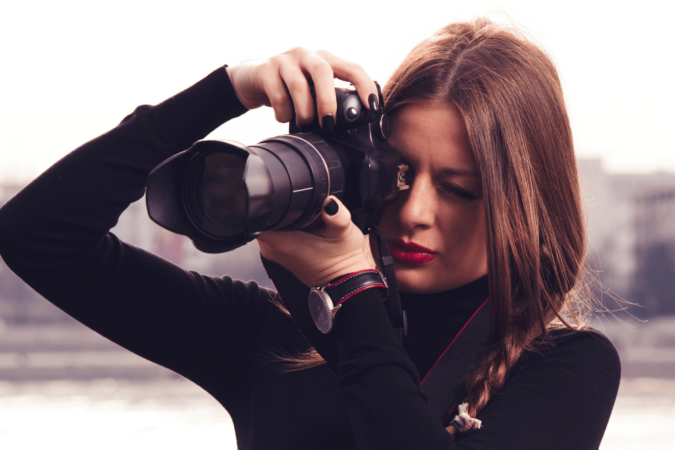
Are you looking to market your real estate photography business? If so, then you’ve come to the right place. Real estate photography is an important part of marketing a property, and it can make all the difference in whether or not a potential buyer decides to take the leap and buy the house. Below we’ll provide 5 Effective Real Estate Photography Tips to Market Your Business.
1. Utilize Natural Light:
Natural light is essential for giving a home a warm and inviting look. Try to photograph properties using natural light instead of relying on artificial lighting whenever possible. This will give your photos a more natural look and feel, which will be much more attractive to potential buyers.
2. Use Wide-Angle Lenses:
Wide-angle lenses are ideal for capturing an entire room in one shot, allowing potential buyers to know how spacious a property is before they even step inside. Ensure you invest in good quality wide-angle lenses. So your photos are clear and crisp.
3. Take Advantage of Drone Photography:
Drone photography is becoming increasingly popular among real estate photographers as it allows them to capture beautiful aerial shots while providing a unique perspective on each property’s surroundings. Investing in drone photography can help set you apart from other real estate photographers in your area and draw more attention to your work.
4. Showcase Your Work:
As with any other type of business, it’s important that you showcase your work whenever possible so that potential clients can see what kind of quality they can expect from you if they hire you for their project. You can do this by creating an online portfolio or by printing out copies of some of your best photos and displaying them at local events or networking functions.
5. Get Social Media Savvy:
Social media is a great way to market yourself as a real estate photographer as it allows you to reach potential clients quickly and easily without spending too much money on advertising. Create professional accounts on Twitter, Instagram, Facebook, etc., then start sharing some of your best photos with people who might be interested in hiring you!
Conclusion: With these five tips for marketing your real estate photography business, you’ll be well on your way to success! By utilizing natural light, investing in good quality wide-angle lenses, taking advantage of drone photography when appropriate, showcasing your work wherever possible and getting social media savvy –you’ll be sure to stand out from the competition! Good luck!
In a Nutshell
Learning real estate photography doesn’t have to be difficult. There are many resources, such as this blog post, that can helprole of a real estate photographer. You don’t need a lot of expensive equipment to get started in real estate photography–just a DSLR camera and some basic lenses will do. And once you’ve got your business up and running, there are lots of marketing strategies you can use to attract clients. So what are you waiting for? Get out there and start shooting! If you enjoyed this post on real estate photography, be sure to check out our other blogs for more tips and tricks on how to promote your photography business.




